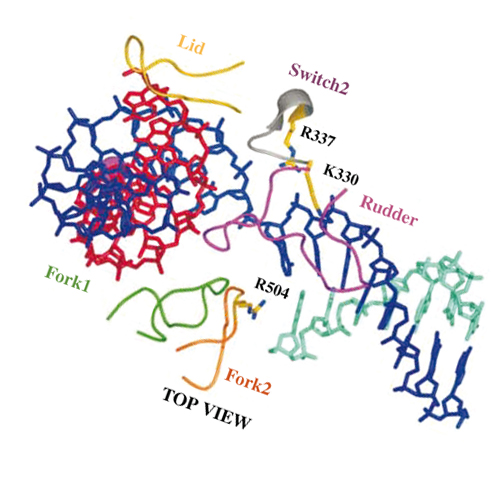Structure–function analysis of the RNA polymerase cleft loops elucidates initial transcription, DNA unwinding and RNA displacement
10-Dec-2007
Nucleic Acids Research, 2007, doi: 10.1093/nar/gkm1086, 676-687 published on 10.12.2007
Nucleic Acids Research, online article
Nucleic Acids Research, online article
The active center clefts of RNA polymerase (RNAP) from the archaeon Pyrococcus furiosus (Pfu) and of yeast RNAP II are nearly identical, including four protruding loops, the lid, rudder, fork 1 and fork 2. Here we present a structure–function analysis of recombinant Pfu RNAP variants lacking these cleft loops, and analyze the function of each loop at different stages of the transcription cycle. All cleft loops except fork 1 were required for promoter-directed transcription and efficient elongation. Unprimed de novo transcription required fork 2, the lid was necessary for primed initial transcription. Analysis of templates containing a pre-melted bubble showed that rewinding of upstream DNA drives RNA separation from the template. During elongation, downstream DNA strand separation required template strand binding to an invariant arginine in switch 2, and apparently interaction of an invariant arginine in fork 2 with the non-template strand.











